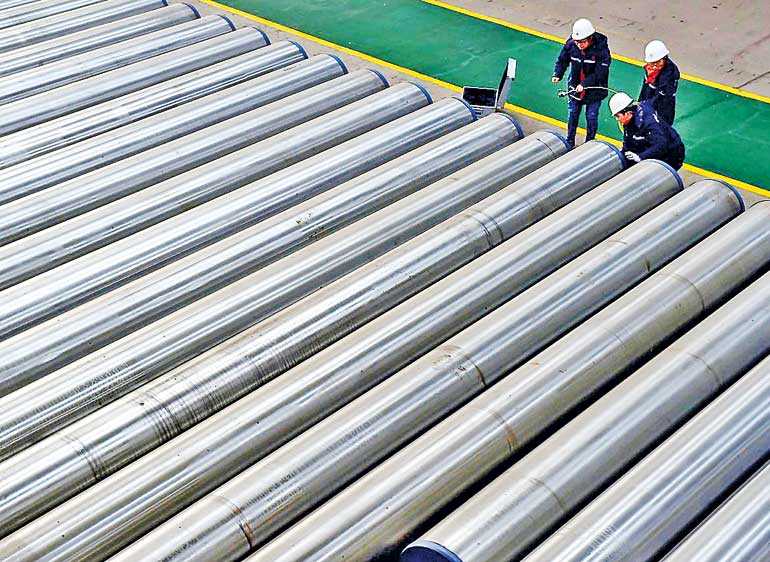Monday Apr 21, 2025
Monday Apr 21, 2025
Wednesday, 30 October 2019 00:00 - - {{hitsCtrl.values.hits}}

FILE PHOTO: Workers check on seamless steel pipes at a factory of a steel products manufacturer in Cangzhou, Hebei province, China December 16, 2018. REUTERS
BEIJING (Reuters): China’s factory activity is expected to have shrunk for the sixth month in October, a Reuters poll showed, suggesting hardly any let up in pressure on the domestic and export sectors from slowing global demand and a trade war with the United States.
The official Purchasing Managers’ Index (PMI) for October was seen at 49.8, unchanged from September, but still below the 50-point mark that separates expansion from contraction, according to the median forecasts of 35 economists.
The extended downturn in manufacturing reinforces evidence of further weakening in the world’s second-biggest economy and puts pressure on authorities to roll out more stimulus to avert a sharper slowdown and large-scale job losses.
While US and Chinese trade negotiators are working on nailing down a ‘Phase 1’ trade deal for their presidents to sign next month, analysts and investors remain cautious given there are still a number of differences between the two sides on key issues.
Many expect a durable resolution to the protracted trade war is unlikely in the near term. China still faces new US tariffs set to kick in on 15 December, on top of the existing 25% tariffs on $ 250 billion of Chinese imports.
That is likely to weigh on businesses and consumers.
China’s gross domestic product growth slowed more than expected to 6.0% year-on-year in the third quarter, its weakest pace in almost three decades.
For the whole of 2019, GDP growth is expected to cool to 6.2% and then hit 5.9% in 2020, according to a Reuters poll, underlining the growing challenges faced by Beijing in its efforts to stabilise the economy.
In September, a slide in China’s exports picked up pace while imports contracted for a fifth straight month, official data showed.
Profits at China’s industrial firms fell in September for the second consecutive month as the cooling economy and trade war weighed on corporate balance sheets.
For January-September, industrial firms earned profits of 4.59 trillion yuan, down 2.1% from a year earlier, and worse than the 1.7% reading in the first eight months.
China unexpectedly kept unchanged its new benchmark lending rate in October after reductions in August and September, suggesting Beijing is keen to avoid overly loosening monetary policy for fear it may push up already-high debt levels across the economy.
The Government has been trying to spur domestic demand for over a year through higher infrastructure spending, but the measures have been slow to gain traction.
A private survey - the Caixin/Markit Manufacturing Purchasing Managers’ Index (PMI)- which focuses more on small- and medium-sized, export-driven Chinese firms, is expected to show factory activity expanded in October.
However, it is still forecast to show subdued growth with the headline gauge edging lower to 51.0 from 51.4 in September.
The official PMI and its sister survey on the services sector will be released on Thursday.
The Caixin manufacturing PMI will be published on Friday and the Caixin services PMI survey will be out on 5 November.